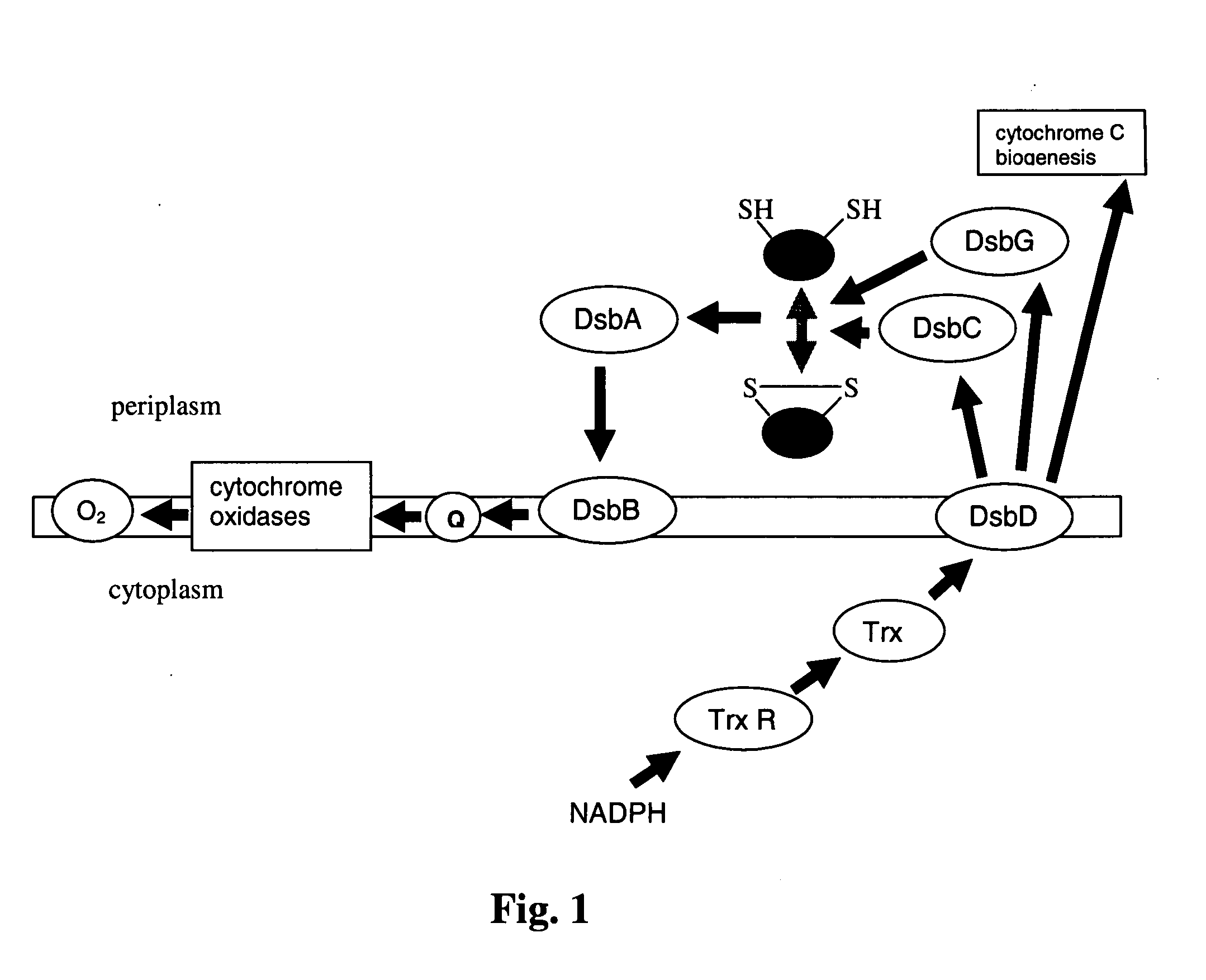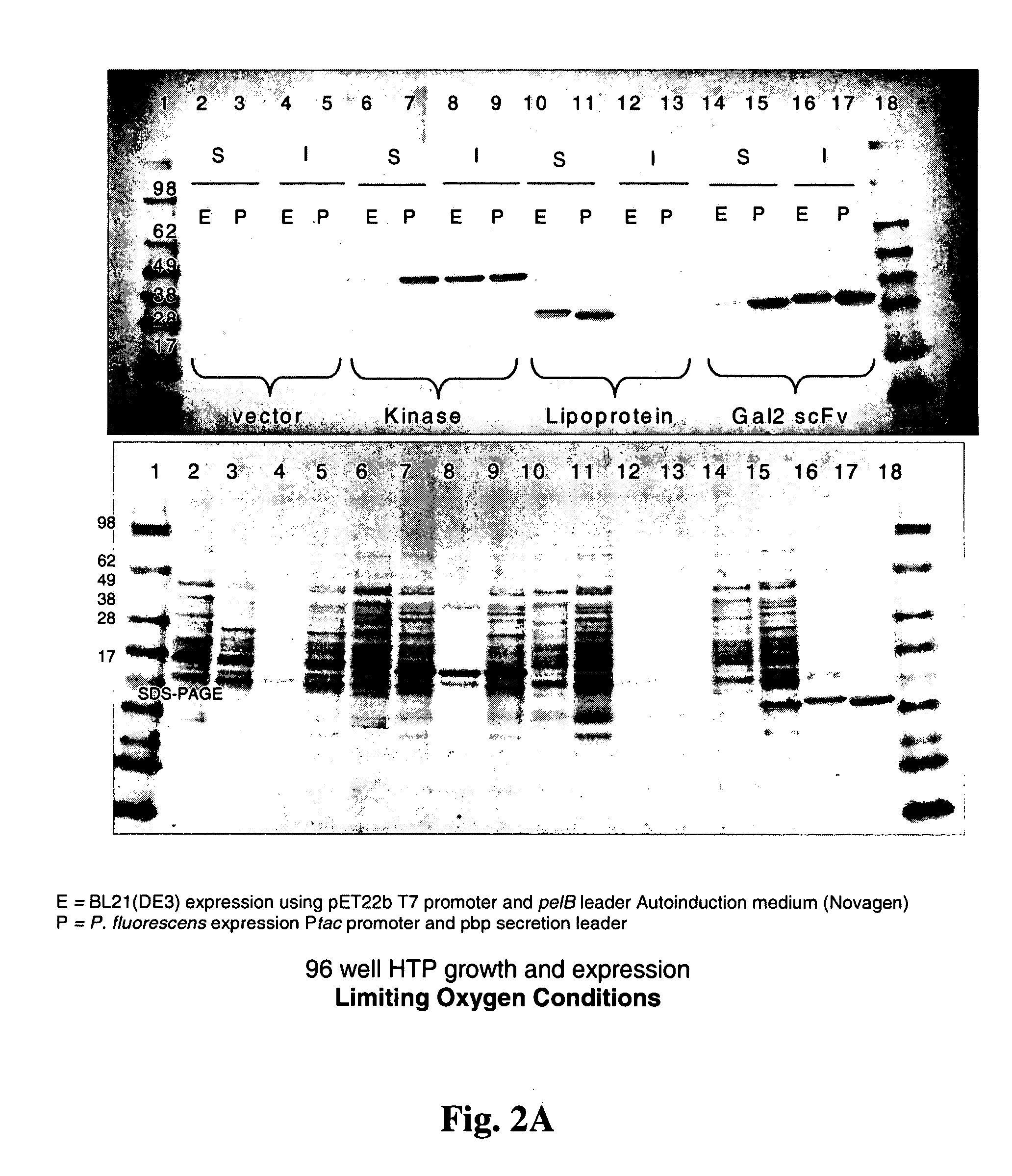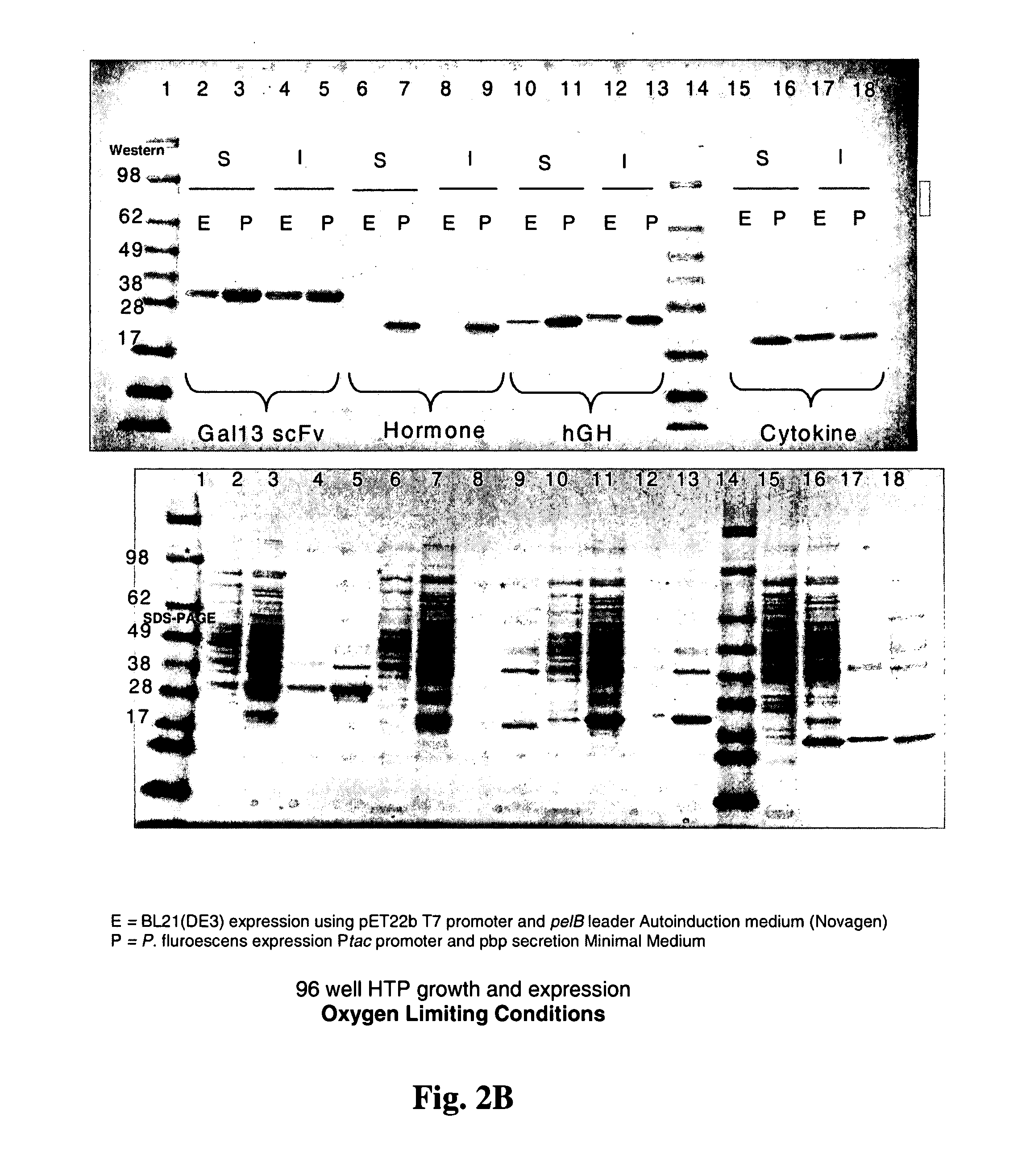Processes for improved disulfide bond formation in recombinant systems
a technology of recombinant systems and disulfide bonds, which is applied in the field of protein production, can solve the problems of limited disulfide bond formation level, achieve the effects of increasing the content of quinhydrone, increasing the rate of nadph production in the cell, and increasing the production of quinon
- Summary
- Abstract
- Description
- Claims
- Application Information
AI Technical Summary
Benefits of technology
Problems solved by technology
Method used
Image
Examples
example 1
Disulfide Bond Formation in Gram Negative Bacteria
[0164] Heterologous gene induction in P. fluorescens fermentations is done under conditions when oxygen is not limited. As an obligate aerobe, this organism will not grow or produce ATP or GTP (necessary for cellular metabolism including protein biosynthesis) unless oxygen is present in the growth medium. As shown in FIGS. 2A and 2B, cells were cultured in 96-well plates with shaking, micro-aerophilic conditions, where E=E. coli, P=P. fluorescens, S=soluble cell fraction, and I=insoluble cell fraction. Because electrons resulting from the oxidation of protein disulfide bonds (DsbA, DsbB catalyzed rections) are passed directly into the pathway of oxidative phosphorylation, this pathway for the oxidation of sulfhydriles will always be available to P. fluorescens in an oxidative growth environment, even if those conditions are microaerophilic. E. coli on the other hand, as a facultative aerobe, tends to begin growing anaerobically and ...
example 2
Disulfide Bond Formation in Gram Negative Bacteria
[0165] The quinone reductase activity of DsbB involves two quinones: a prosthetic quinone, which remains bound to DsbB, and a transient (diffusible substrate) quinone. (Regeimbal, J., S. Gleiter, B. L. Trumpower, C.-A. Yu, M. Diwakar, D. P. Ballou, and J. C. A. Bardwell. 2003. Disulfide bond formation involves a quinhydrone-type charge-transfer complex. PNAS 100:13779-13784). The prosthetic and transient quinones are initially reduced. An oxidized quinone derived from the quinone pool (electron transport chain) replaces the transient reduced quinone. The resident reduced quinone then transfers electrons to the transient quinone through a quinhydrone complex. The reoxidation of DsbA results in reduction of the C-terminal disulfide in DsbB which undergoes dithiol-disulfide exchange with the N-terminal cysteines. The newly formed N-terminal dithiol then reduces the prosthetic quinine. Because the two reduced quinones do not form a stab...
example 3
Reduced Availability of Quinone Cofactor Reduces the Ability of Gram Negative Bacterium to Produce Disulfide Bonds in Heterologously Expressed Proteins
[0166] The water-soluble thiols 2-mercaptoethanol, 1-thioglycerol, and dithiothreitol inhibit gram-positive and gram-negative bacteria at millimolar concentrations (Zeng, H., I. Snavely, P. Zamorano, and G. T. Javor, 1998, Low Ubiquinone Content in Escherichia coli Causes Thiol Hypersensitivity, J. Bacteriol. 180:3681-3685). Several processes are affected, and include interference with the formation of disulfide bonds of periplasmic and outer membrane proteins. In an attempt to look for genes which may be regulating these responses, Zeng et al. searched for thiol-hypersensitive mutants of E. coli. (Id.) The search was based on the rationale that should such a gene(s) exist, their inactivation would likely yield a thiol-hypersensitive phenotype. Zeng et al mutagenized the THU (ubiX) strain of E. coli. The cells were grown on minimal g...
PUM
| Property | Measurement | Unit |
|---|---|---|
| Molar density | aaaaa | aaaaa |
| Concentration | aaaaa | aaaaa |
| Conformation | aaaaa | aaaaa |
Abstract
Description
Claims
Application Information
 Login to View More
Login to View More - R&D
- Intellectual Property
- Life Sciences
- Materials
- Tech Scout
- Unparalleled Data Quality
- Higher Quality Content
- 60% Fewer Hallucinations
Browse by: Latest US Patents, China's latest patents, Technical Efficacy Thesaurus, Application Domain, Technology Topic, Popular Technical Reports.
© 2025 PatSnap. All rights reserved.Legal|Privacy policy|Modern Slavery Act Transparency Statement|Sitemap|About US| Contact US: help@patsnap.com



